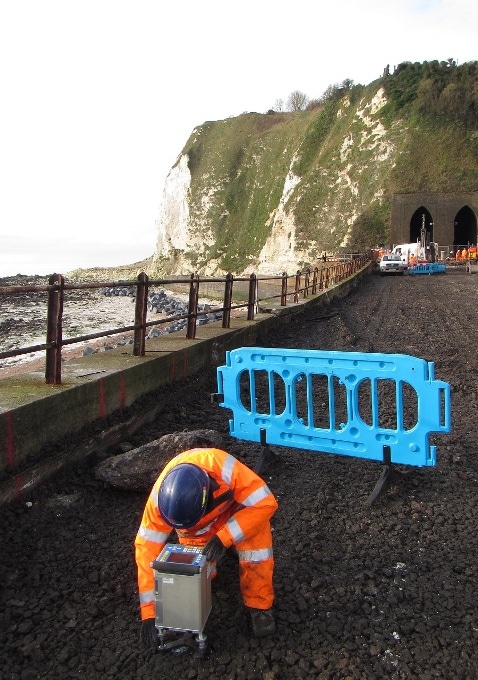Nov 12 2018
A UK consortium of prominent scientific and engineering companies has collaborated to create a new industry of with the ability to detect and monitor objects under the ground in a better way compared to any existing technology, thus minimizing the need for investigative digging or drilling.
 A UK consortium of leading scientific and engineering companies has come together to develop a new industry of quantum cold-atom sensors that will detect and monitor objects beneath the ground better than any current technology. (Image credit: University of Birmingham)
A UK consortium of leading scientific and engineering companies has come together to develop a new industry of quantum cold-atom sensors that will detect and monitor objects beneath the ground better than any current technology. (Image credit: University of Birmingham)
The Gravity Pioneer project, which has been awarded a research funding of £6 million from UK Research and Innovation, was launched at the 2018 National Quantum Technologies Showcase in London on November 9th, 2018.
The Gravity Pioneer project will be headed by RSK, a leading environmental and engineering services company, and will include 12 project partners from renowned organizations that are engaged at present in quantum technologies in the United Kingdom: Teledyne e2v, Fraunhofer UK, Altran, Geomatrix Earth Science, Magnetic Shields, UniKLasers, Silicon Microgravity, Optocap, QinetiQ, the University of Birmingham, and the University of Southampton. The goal of the project is to develop and test an innovative gravity instrument with evident advantages over current technologies on the market.
The University of Birmingham, lead of the Quantum Technology Hub for Sensors and Metrology, is academic lead for the project—building on a firm alliance between the School of Physics and Astronomy and the Department of Civil Engineering to offer expertise in the creation and application of quantum technology-based gravity gradient sensors for practical applications.
Principle Investigator Dr Michael Holynski, lead of the Atom Interferometry team at Birmingham and scientific lead of the project, with Co-Investigators Prof Nicole Metje, Head of the Power and Infrastructure Group, Prof Kai Bongs, Director of the Quantum Technology hub, Dr Jamie Vovrosh, Dr Dan Boddice and the team will closely cooperate with the project partners to deliver step variations in the potential to detect objects under the ground.
Despite our increasing ability to detect and monitor objects that exist on land, in the sea, around buildings or in space, our ability to detect objects beneath the ground has not improved significantly. When it comes to attempting to locate a forgotten mineshaft, determine the extent of a sinkhole or assess the quality of infrastructure, we still often resort to digging or drilling holes. This presents huge economic and societal costs as road networks are dug up, oil wells are dry or brownfield land is left undeveloped.
George Tuckwell, Project Lead and Divisional Director for Geosciences and Engineering, RSK
Current techniques for ground investigation are ground penetrating radar, classical microgravity, and seismic technologies; however, these can be limited in penetration, sensitivity, or cost. The goal of Gravity Pioneer is to create a tested blueprint for a commercially relevant device with the ability to overcome these difficulties. It aims to collaborate with leading UK universities to demonstrate a 10× measurement speed enhancement and a 2× sensitivity enhancement over the industry standard gravity sensor.
The huge project has received a research funding of £6 million from UK Research and Innovation, the national funding agency that invests in science and research in the United Kingdom. In response to the Quantum Technologies Pioneer Fund for £20 million, the consortium submitted a bid, the aim of which is to develop prototypes in two years that could be used in future sensors, digital services, and consumer electronics. The fund, which is part of the Industrial Strategy Challenge Fund, executes the policies set out in the UK government’s white paper Industrial Strategy: Building a Britain Future for the Future, which was published in 2017.
Dr Richard Murray, business development manager at Teledyne e2v, spoke on receiving the research funding: “The project was proposed by a UK consortium of the best scientific and engineering companies the UK has to offer, from component manufacturers to instrument developers and end-users.”
A large factor in the bid’s success was the prominent role of end-users in the project structure and the full supply chain of service, instrument and component partners involved. Together, we are working to build a gravity instrument that works, that the marketplace wants and that provides value to users such as RSK and client organisations such as BP, Network Rail, HS2 and Airbus. The UK is world leading in quantum technology and the project brings together the best the UK has to offer in this field. Once we can demonstrate the advanced performance of quantum cold-atom sensors, the economic and societal benefits of this new quantum industry in the UK will be significant.
Dr Richard Murray, Business Development Manager, Teledyne e2v